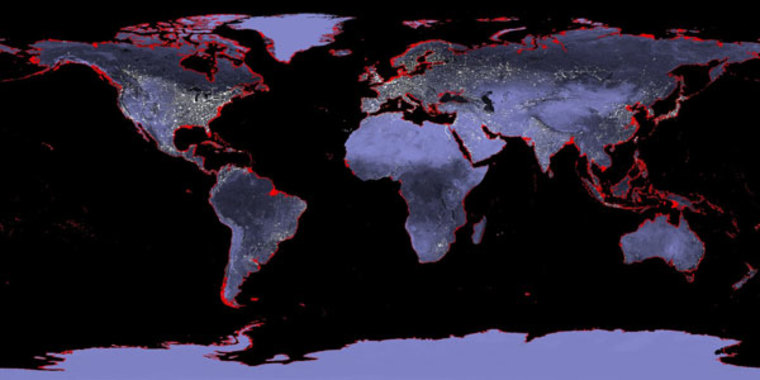About 3 million years ago — at a time when climate conditions paralleled those of modern times — sea levels stood about 66 feet (20 meters) higher, new research indicates.
The height of ancient sea level indicates Greenland and the western part of Antarctica had no ice sheets, and the massive ice sheet covering East Antarctica, the "big elephant in the room," had also contributed, according to lead study researcher Kenneth Miller, a professor at Rutgers University.
For decades, there has been controversy around what it takes to melt the East Antarctic Ice Sheet — which contains about 7.2 million cubic miles (30 million cubic kilometers) of ice, according to the British Antarctic Survey. This new research indicates that, about 3 million years ago, some melting of this ice sheet had occurred.
"Understanding how fast and how much the East Antarctic Ice Sheet can melt is really what we have learned most from our study," Miller said, adding that the results indicate certain parts of this ice sheet are more vulnerable than was thought.
The estimate of 66 feet (20 meters) is important because melting the ice now on Greenland would raise sea levels 26.2 feet (8 meters); melting the West Antarctic Ice Sheet would raise it another 5 meters (16.4 feet). Since together these don't account for the difference, water that is now frozen on the East Antarctic must have been liquid 3 million years ago.
In this case, the past has relevance for the future. During the Pliocene Epoch, the status of sea levels 2.7 million to 3.2 million years ago, average global sea-surface temperatures at the time have been estimated to be about 3.6 to 5.2 degrees Fahrenheit (2 to 3 degrees Celsius) warmer than today. In addition, atmospheric concentrations of carbon dioxide —the dominant greenhouse gas —at the time appear comparable to those measured in 2011.
During annual climate talks, international climate negotiators have set an unofficial goal of cutting global greenhouse gas emissions to a level that would limit global temperature increase this century to 3.6 degrees F (2 degrees C), although scientists believe this cap looks increasingly unachievable.
Of course, sea levels won't reach Pliocene levels overnight, or even by the end of the century, but these results offer a hint at a distant future, according to Miller.
"This is telling us a lot about what is going to happen eventually, eventually meaning really more than 500 years (from now)," he said, adding that by 2100 sea levels are expected to increase by 2.6 to 3.3 feet (0.8 to 1 meter).
Miller and colleagues derived a more precise estimate of Pliocene sea levels than has been accomplished in the past by looking at sediment cores from Virginia, New Zealand and the Eniwetok Atoll in the northern Pacific Ocean. They examined the pressures on top of the sediments laid down at this time, as well as chemical clues to environmental conditions, including ratios of oxygen isotopes (atoms of different weights). The ratio of oxygen isotopes laid down in sediment changes with the volume of water locked in ice elsewhere on the planet.
Sea levels don't rise in immediately with air temperatures because water warms more slowly and ice takes time to melt. Melt water isn't the only contributor to sea level rise; water expands as it warms.
The study was published online Monday in the journal Geology.
You can follow senior writer Wynne Parry on Twitter . Follow LiveScience for the latest in science news and discoveries on Twitter and on .
